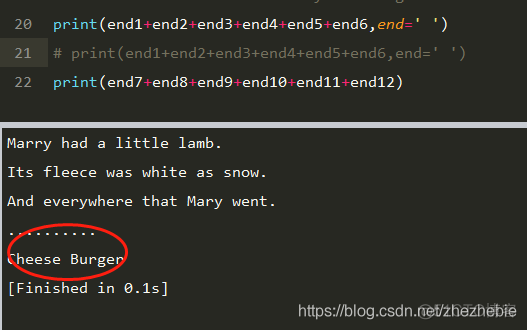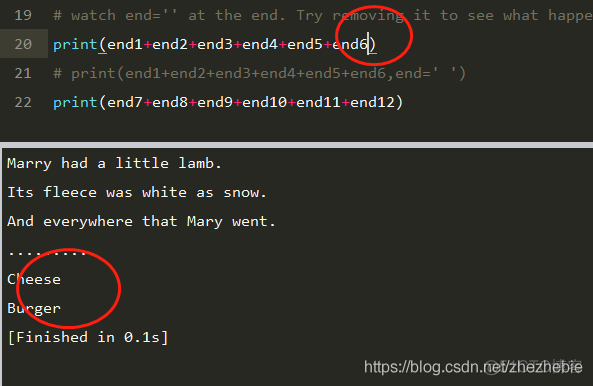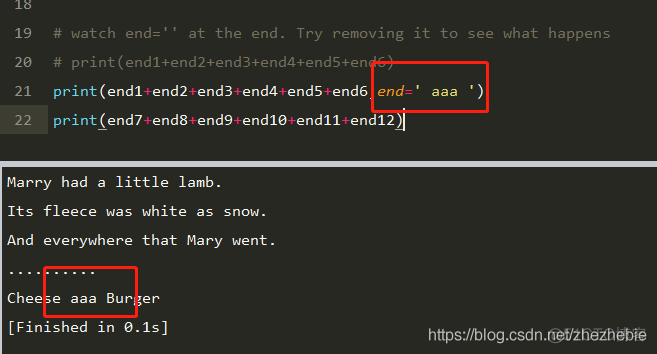exercise 6 文本格式化 在python里面,一切都是对象,对象拥有很多属性和方法.例如字符串就有format方法,传递参数到占位符. 连接两个字符串用’+’ print(x,y)这样的话x和y之间会有一个空格.
exercise 6 文本格式化
在python里面,一切都是对象,对象拥有很多属性和方法.例如字符串就有format方法,传递参数到占位符.
连接两个字符串用’+’
print(x,y)这样的话x和y之间会有一个空格.
types_of_people = 10
x=f"There are {types_of_people} types of people."
binary = "binary"
do_not="don't"
y=f"Those who know {binary} and those who {do_not}."
print(x)
print(y)
print(f"I said: {x}")
print(f"I also said:'{y}'")
print(x + y)
hilarious=False
joke_evaluation = "Is't that joke so funny?! {}"
print(joke_evaluation.format(hilarious))
w="This is the left side of..."
e="a string with a right side."
print(w + e)
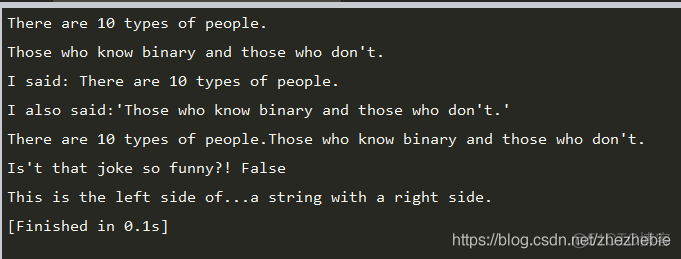
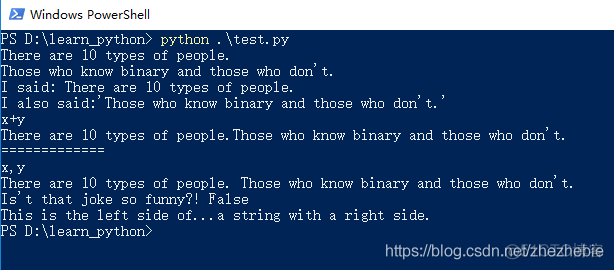
exercise 7 改变print结束符
print("Marry had a little lamb.")print("Its fleece was white as {}.".format('snow'))
print("And everywhere that Mary went.")
print("." * 10) # what'd that do?
end1 = "C"
end2 ="h"
end3="e"
end4="e"
end5="s"
end6="e"
end7="B"
end8="u"
end9="r"
end10="g"
end11="e"
end12="r"
# watch end='' at the end. Try removing it to see what happens
print(end1+end2+end3+end4+end5+end6,end=' ')
# print(end1+end2+end3+end4+end5+end6,end=' ')
print(end7+end8+end9+end10+end11+end12)
